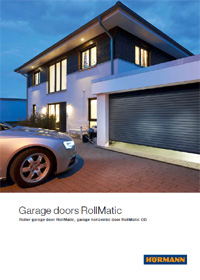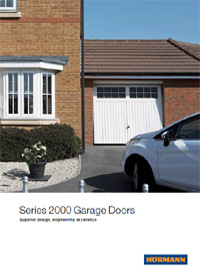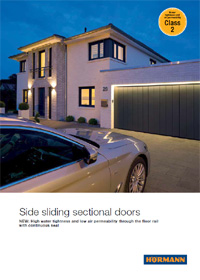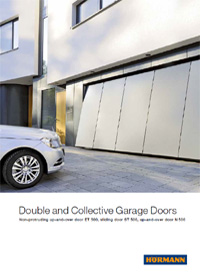Quality, Reliability & Great Value
Garage Doors Watford, Hertfordshire | Garage Door Repair Watford, Hertfordshire | Roller Shutter Garage Doors Watford, Hertfordshire
People want their properties to look fantastic! This is not a surprising fact, but it is surprising how many people spend thousands on replacement windows and doors, exterior decorative features and making their gardens and driveways look amazing but ignore their garage.
All too often we see garage doors that are dented, warped or in desperate need of a coat of paint ruining the look of an otherwise beautiful property. However, one does not have to spend a king's ransom to get a gorgeous and functional new garage door. ACE Garage Doors have a wide range of garage doors in many assorted styles and with many different operating mechanisms. We really do have the garage door to suit everyone.
Whether it is a manual or electronic mechanism you want. We can take care of your specific needs, as we are frequently conducting services, repairs, or installations in and around the Watford area.
Where is Watford?
Watford is a town and non-metropolitan district with borough status in Hertfordshire, which is about fifteen miles northwest of Central London, on the banks of the River Colne.
Watford was initially a small market town, the Grand Junction Canal encouraged the construction of paper-making mills, print works, and breweries. While industry has declined in Watford, its location near London and transport links have attracted several companies to site their headquarters in the town. Cassiobury Park is a public park that was once the manor estate of the Earls of Essex.
Watford developed next to the River Colne on land belonging to St Albans Abbey. In the 12th century, a charter was granted allowing a market, and the building of St Mary's Church began. Watford grew partly due to travellers going to Berkhamsted Castle and the royal palace at Kings Langley. A mansion was built at Cassiobury in the 16th century. This was partly rebuilt in the 17th century and another country house was built at The Grove.
The Grand Junction Canal in 1798 and the London and Birmingham Railway in 1837 resulted in Watford's rapid growth, with paper-making mills such as John Dickinson at Croxley, influencing the development of printing in the town. Two brewers, Benskins and Sedgwicks, amalgamated and flourished in Watford until their closure in the late 20th century. Hertfordshire County Council designates Watford to be a major sub-regional centre. Several head offices are based in Watford. International conferences and sporting events have also taken place in Watford, including the 2006 World Golf Championship, the 2013 Bilderberg Conference and the 2019 NATO summit which all took place at The Grove.
Watford became an urban district under the Local Government Act 1894 and a municipal borough by grant of a charter is separated from Greater London to the south by Three Rivers District. Watford Borough Council is the local authority with the Mayor of Watford as its head - one of only eighteen directly elected mayors in England and Wales.
The history of Watford
There is evidence of some limited prehistoric occupation around the Watford area, with a few Celtic and Roman finds, though there is no evidence of a settlement until much later. Watford stands where the River Colne could be crossed on an ancient trackway from the southeast to the northwest. Watford's High Street follows the line of part of this route. The town was located on the first dry ground above the marshy edges of the River Colne.
The name Watford may have arisen from the Old English for "waet", which means full of water as the area was marshy, or "wath", meaning hunting, and ford. St Albans Abbey claimed rights to the manor of Casio, which used to be called "Albanestou", which included Watford, dating from a grant by King Offa in AD 793.
The name Watford is first mentioned in an Anglo-Saxon charter of 1007, where "Watforda" is one of the places marking the boundary of "Oxanhaege". It is not mentioned in the Domesday Book of 1086, when this area was part of St Albans Abbey's manor of Cashio. In the 12th century the Abbey was granted a charter allowing it to hold a market here, and the building of St Mary's Church began. The settlement's location helped it to grow, since as well as trade along this north-south through route it possessed good communications into the vale of St Albans to the east and into the Chiltern Hills along the valley of the River Chess to the west.
The town grew modestly, assisted by travellers passing through to Berkhamsted Castle and the royal palace at Kings Langley. A big house was built at Cassiobury in the 16th century. This was partly rebuilt in the 17th century and another substantial house was built nearby at The Grove. The houses were expanded and developed throughout the following centuries. Cassiobury became the family seat of the Earls of Essex, and The Grove the seat of the Earls of Clarendon.
In 1762, Sparrows Herne Turnpike Road was established across the Chilterns. The toll road followed the route of the original A41 road. The location of a toll house can be seen at the bottom of Chalk Hill on the Watford side of Bushey Arches; set in an old flint stone wall is a Sparrows Herne Trust plaque.
In 1778, Daniel Defoe described Watford as a "genteel market town, very long, having but one street."
The Industrial Revolution and Watford
Watford remained an agricultural community with some cottage industry for many centuries. The Industrial Revolution brought the Grand Junction Canal from 1798 and the London and Birmingham Railway from 1837, both located here for the same reasons the road had followed centuries before, seeking an easy gradient over the Chiltern Hills. The land-owning interests permitted the canal to follow closely by the river Gade, but the prospect of smoke-emitting steam trains drove them to ensure the railway gave a wide berth to the Cassiobury and Grove estates. Consequently, although the road and canal follow the easier valley route, the railway company was forced to build an expensive tunnel under Leavesden to the north of the town.
Watford's original railway station opened in 1837 on the west side of St Albans Road, a small, single-storey red-brick building. It closed in 1858 when it was replaced by a new, larger station at Watford Junction approximately two hundred metres further south-east. The old station house still stands today; it is a Grade-II-listed building, now in the middle of a high-density housing development, it and was for many years a second-hand car dealership. Watford Junction railway station is situated to the northeast of the town centre.
These developments gave the town excellent communications and stimulated its industrial growth during the 19th and 20th centuries. The Grand Union Canal allowed coal to be brought into the district and paved the way for industrial development. The Watford Gas and Coke Company was formed in 1834, and gas works built. The canal allowed paper-making mills to be sited at Croxley. The John Dickinson and Co. mill beside the canal manufactured the Croxley brand of excellent quality paper. There had been brewing in Watford from the 17th century and, by the 19th century, two industrial scale brewers Benskins and Sedgwicks were in the town. The parish church of St Mary's was extensively restored in 1871.
Watford expanded slightly during this time. In 1851 a new street off the High Street was opened, King Street, followed by Queens Road and Clarendon Road in the early 1860s. During this time, Watford had a population of around 6,500 The railways also continued to expand from Watford during this period; the Watford and Rickmansworth Railway opened in 1862 as a short branch line via Watford High Street to Rickmansworth, and another branch was added to Croxley Green in 1912. The original plan was to extend the Rickmansworth line south connecting Watford to Uxbridge; this scheme failed, and both the Rickmansworth and Croxley branches closed.
Watford's population had risen to 17,063 by 1891 to become overcrowded. Local landowners sold land for the development of the town, and it was bought up by commercial interests. Various factories and other works sprung up in Watford, mostly breweries and prints, but also engineering works, a steam laundry, a cold storage company and a cocoa processing plant. The town expanded rapidly, most of the new inhabitants moving in from London.
The Twentieth Century in Watford
At the start of the 20th century the town was growing fast. New roads were laid out in Callowland, North Watford, and in West Watford on farmland. Many continued to live in the cramped and unsanitary houses in the yards and alleyways opening off the High Street. Some of these people were among those who rioted in 1902 when the celebration for King Edward VII's coronation was postponed. The council had a programme of slum clearance which stopped with the outbreak of World War I in 1914. Building council houses resumed after the war and in the 1920s the Harebreaks estate was developed.
By the 1920s, printing had become the biggest industry in Watford. The biggest printers in the town were Sun Printers Ltd and Odhams Press. Watford was the biggest printing centre in the world and many advances in printing were made in Watford. During World War II the prints were taken over by the government who used them to print propaganda. After the war, the printing industry began going into decline. Union activity was common in Watford and advances in technology meant much of the industry became obsolete. Odhams Press closed in 1978, and The Sun moved out of Watford during the 1980s after market reforms allowed it to do so.
In 1925, the Metropolitan Railway Company built a branch to Watford, opening a station close to Cassiobury Park.
In the 1950s and 1960s, Watford was the home of the British designer furniture manufacturer Hille. At their premises on St Albans Road, designed by the modernist architect Erno Goldfinger, the designer Robin Day conceived the polypropylene stacking chair, now recognised as a classic of modern design. Although Hille left the area in 1983, the listed Goldfinger building still stands on St Albans Road. Mod culture found expression through clubs such as the Ace of Herts in the 1960s.
The de Havilland factory at Leavesden was responsible for the manufacture of the aircraft engines and later became Leavesden Aerodrome, to the north of Watford. No longer operational, it was converted into Leavesden Film Studios, now famously the home of the Harry Potter films.
So, should you require garage door servicing, repair, or replacement in or around the Watford area, do not hesitate to drop us a line. We are a family owned and run business who take pride in our reputation for excellence.
We also cover the following areas in Hertfordshire:
- Baldock, Hertfordshire - Garage Doors | Garage Door Repair | Roller Shutter Garage Doors
- Borehamwood, Hertfordshire - Garage Doors | Garage Door Repair | Roller Shutter Garage Doors
- Broxbourne, Hertfordshire - Garage Doors | Garage Door Repair | Roller Shutter Garage Doors
- Elstree, Hertfordshire - Garage Doors | Garage Door Repair | Roller Shutter Garage Doors
- Harpenden, Hertfordshire - Garage Doors | Garage Door Repair | Roller Shutter Garage Doors
- Hertford, Hertfordshire - Garage Doors | Garage Door Repair | Roller Shutter Garage Doors
- Hitchin, Hertfordshire - Garage Doors | Garage Door Repair | Roller Shutter Garage Doors
- Hoddesdon, Hertfordshire - Garage Doors | Garage Door Repair | Roller Shutter Garage Doors
- Letchworth Garden City, Hertfordshire - Garage Doors | Garage Door Repair | Roller Shutter Garage Doors
- Potters Bar, Hertfordshire - Garage Doors | Garage Door Repair | Roller Shutter Garage Doors
- Radlett, Hertfordshire - Garage Doors | Garage Door Repair | Roller Shutter Garage Doors
- Rickmansworth, Hertfordshire - Garage Doors | Garage Door Repair | Roller Shutter Garage Doors
- Royston, Hertfordshire - Garage Doors | Garage Door Repair | Roller Shutter Garage Doors
- St. Albans, Hertfordshire - Garage Doors | Garage Door Repair | Roller Shutter Garage Doors
- Stevenage, Hertfordshire - Garage Doors | Garage Door Repair | Roller Shutter Garage Doors
- Waltham Cross, Hertfordshire - Garage Doors | Garage Door Repair | Roller Shutter Garage Doors
- Welwyn Garden City, Hertfordshire - Garage Doors | Garage Door Repair | Roller Shutter Garage Doors
ACE Garage Doors
For 29 years Ace has been supplying, fitting, servicing and repairing Garage Doors, with thousands of satisfied customers in Hertfordshire and all over the South East. Providing truly excellent customer service means everything to us at ACE Garage Doors, so we put our customers needs at the heart of our business and strive to provide a friendly, prompt and speedy service without compromising on quality or value.
If you are looking for high quality Garage Doors and service you can trust then contact ACE Garage Doors for a QUICK QUOTE today.

Why choose ACE Garage Doors?
- Established 29 years
- Fast and friendly service
- 10 year door guarantee
- 5 year motor guarantee
- No deposit required
- Established brands
- Award winning service

Speed
We aim to respond to enquiries the same day, and provide a rapid quote. If a FREE site survey is required we aim to get to you within 48 hours. We also have a 24/7 repairs service where one of our skilled team will attend to secure your property, or rescue your car!
Customer service
Customer satisfaction is at the forefront of everything we do. We recognise that people lead busy lives, and so we aim to be responsive to enquiries, provide realistic lead-times and do not take any payment until the job is finished and our customers are 100% satisfied.
Quality
Our team has 36 years in the industry and only work with established brands we can set our reputation against, plus
we have no sales people or middle men you will be dealing direct with the owners of the company, Darren and Simon.
Read our story here.
Expertise
ACE Garage Doors offer a full fitting and repair service carried out by our professionally qualified team. From the replacement of individual parts through to a full renovation of your garage, ACE Garage Doors are experts in our field with many years of experience to draw on.
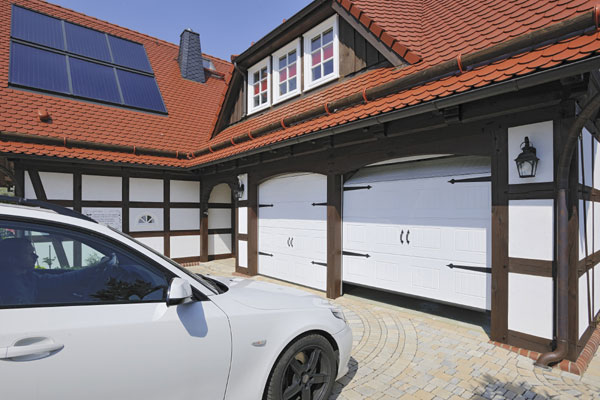
Garage door services
- Extensive range of doors
- All doors fitted by experts
- FREE quotes
- Automated operation
- Full servicing and repairs
- 24/7 call out available

Garage door types
- Electric roller shutters
- Sectional garage doors
- Remote controlled doors
- Insulated garage doors
- Canopy / up & over doors
- Side hinged garage doors
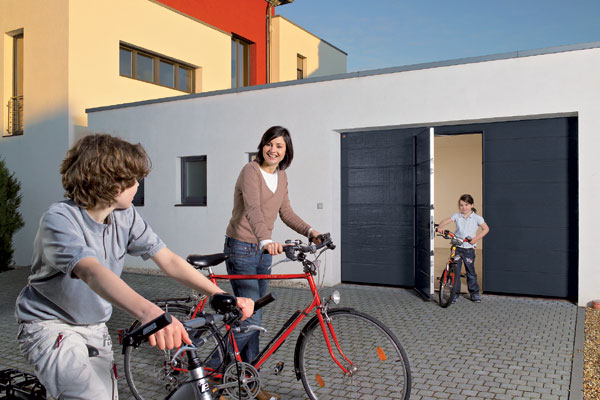

Professional team
- Proud of our reputation
- Fully qualified team
- Over 30 years' experience
- Regularly recommended
- Covid safe services
- Support local football clubs

Areas covered
- Hertfordshire
- Bedfordshire
- Buckinghamshire
- Cambridgeshire
- Essex
- North London
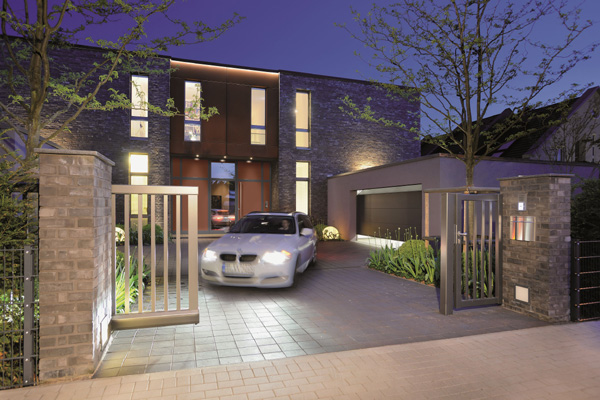
Pricing
We offer extremely competitive pricing by keeping our overheads low, buying in bulk and then passing the savings onto our customers. We have a reputation for providing great value and as a result, we frequently get referred to our customers' families, friends and neighbours.
Industry leading warranties
We offer 10 year warranties for all our up and over and roller doors and frames, and an industry leading 5 year warranties on all our tubular motors, such is our confidence in the quality of our work and components. We also offer 2 year warranties on parts and labour for garage door repairs.
Eco-friendly
As a company we are extremely environmentally aware, and all waste materials, from your old door to the packaging materials for the new product are taken for recycling at our own cost. So by choosing ACE Garage Doors you can be reassured that you are also playing your part to protect the environment.
Easy to follow ordering process
During the FREE SURVEY precise measurements will be taken and your needs matched against a wide range of products from leading manufacturers with whom we deal direct. We will discuss the various materials and finishes available, as well as any optional extra features you might have requested such as glazing and automation.
We can provide doors in almost any colour you can imagine, so provide us with a specific RAL colour or ask us about our colour matching service and we will find it for you! We will inform you of the price fully inclusive of VAT, and if an insurance claim is being made we are happy to provide a written quotation. We don't charge you to take your door away, and it will be recycled for you. Simple.
Selection of garage doors available from ACE Garage Doors
Get a QUICK QUOTE or request more information
If you would like a QUICK QUOTE then please contact us on 01438 742 664 or email us at info@ace-garage-doors.co.uk and we will be in touch shortly.
Further information:
- Sectional Garage Doors in Herts, Beds, Bucks, Essex and North London
- Roller Shutter Garage Doors in Stevenage, Hertfordshire
- Garage Doors in Luton, Bedfordshire
- Garage Doors in Broxbourne, Hertfordshire
- Garage Doors in Epping, Essex
- Garage Door repair in Barnet, London
- Garage Door repair in Biggleswade, Bedfordshire
- Garage Doors in Harpenden, Hertfordshire
- Garage Doors in Hertford, Hertfordshire
- Garage Doors in Hitchin, Hertfordshire
- Garage Doors in Hoddesdon, Hertfordshire
- Hormann Garage Doors in Stevenage, Hertfordshire
- Hormann Sectional Garage Doors in Stevenage, Hertfordshire
- Hormann Sectional Garage Door repair in Stevenage, Hertfordshire
- Hormann Sectional Garage Doors in Stevenage, Hertfordshire
- Garage Doors in Letchworth, Hertfordshire
- Garage Doors in Potters Bar, Hertfordshire
- Garage Doors in Royston, Hertfordshire
- Garage Doors in St Albans, Hertfordshire
- Garage Doors in Welwyn Garden City, Hertfordshire
Hertfordshire
Bedfordshire
Buckinghamshire
Cambridgeshire
Essex
North London
Areas covered :: Articles :: Privacy policy :: Vacancies :: Website map












